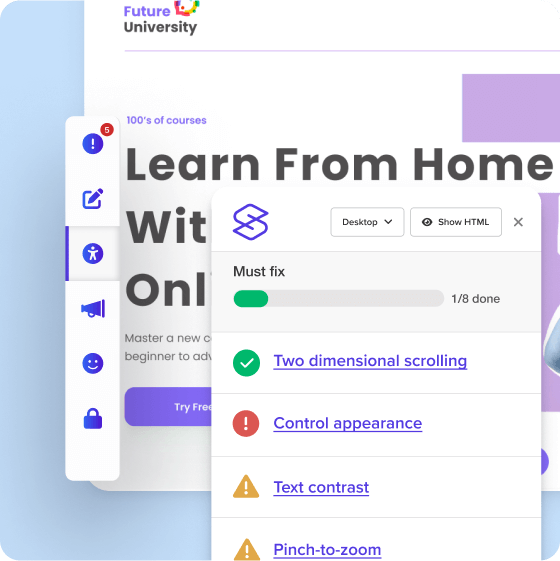This regulation applies to all websites and mobile applications of public sector bodies, such as central and local government, health services, education institutions, etc. The regulation requires public sector websites and mobile apps to meet the Web Content Accessibility Guidelines (WCAG) 2.1 AA standard, an internationally recognized set of technical criteria for web accessibility.
The regulation also requires public sector bodies to publish an accessibility statement on their websites and mobile apps, explaining how accessible they are, what problems they have, and how users can request alternative formats or provide feedback. The regulation is enforced by the Government Digital Service (GDS), which monitors the compliance of public sector websites and mobile apps and can issue improvement notices or take legal action.
Recommendation for compliance
It is recommended that all UK public sector websites should comply with WCAG 2.1 AA.
Law for public sector websites:
Applies to:
- All UK public sector websites
Requirements:
- Comply with Level AA of WCAG 2.1
Potential cost of violation
The Government Digital Service (GDS) monitors the compliance of public sector websites and mobile apps and can issue improvement notices or take legal action against non-compliant public sector bodies.
The Equality and Human Rights Commission (EHRC) can also investigate and enforce the Equality Act 2010, which prohibits discrimination against disabled people in the provision of goods, services, and public functions.
Non-compliant public sector bodies may face legal challenges and compensation claims from disabled users who cannot access their websites or mobile apps.
Non-compliant public sector websites and mobile apps may damage the reputation and credibility of the public sector body, as well as the trust and satisfaction of the users. Non-compliant public sector websites and mobile apps may also appear lower in search engine rankings, reducing their visibility and reach.
Non-compliant public sector websites and mobile apps may incur additional costs for maintenance, support, and remediation. Non-compliant public sector websites and mobile apps may also reduce the efficiency and effectiveness of the public sector body, as they may not deliver the intended outcomes or benefits for the users or the organization.
- Legal costs
- Reputational costs
- Operational costs
The only way to avoid these costs is to comply with the accessibility regulations or to assess the extent to which compliance with the accessibility requirement imposes a disproportionate burden on the public sector body.
A disproportionate burden assessment is a financial cost/benefit exercise that considers factors such as the cost of fixing the accessibility issues, the impact on the organization’s budget, the number of users affected, and the benefits of fixing the issues4. A public sector body must document and publish the results of the assessment, and review it regularly.
Other applicable laws
Law for private sector websites:
The Public Sector Bodies (Websites and Mobile Applications) (No. 2) Accessibility Regulations 2018 does not apply to private sector websites in the UK.
However, the European Accessibility Act will apply to all UK-based businesses supplying goods and services to the EU.
Check your accessibility now with our free browser extension

